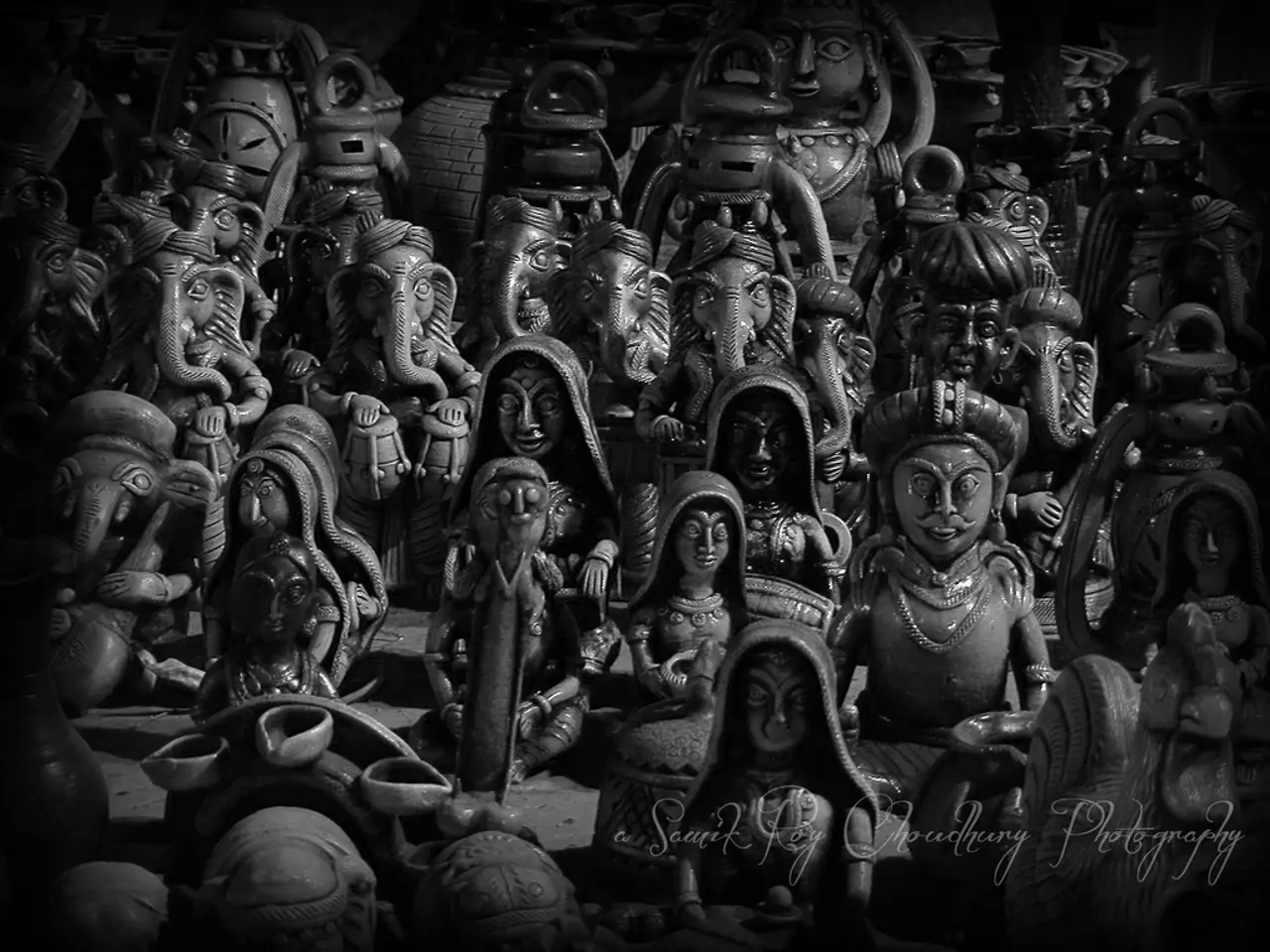Unveiling the Hidden Truth: Exposing Women's Oppression Saga in 'Viksit Bharat'
In various parts of India, violence against women accused of witchcraft remains a concerning issue. The latest example comes from Jharkhand, where Holo Devi, a 65-year-old woman, was brutally murdered in 2022, accused of witchcraft by the village's pahan (chief priest).
This tragic incident underscores the need for both economic development and social awakening in India. The deep roots of misogyny still persist, as shown by the continued occurrence of witchcraft-related violence and murder.
Stories of witch hunting and violence against women often go unreported by mainstream media, creating an under-the-radar culture of genocidal violence against women. According to the National Crime Records Bureau (NCRB) 2019 report, Jharkhand ranks third in witch-hunting instances in India, with an average of at least three women branded as dayans or 'bisahis' (witches) every day in some parts of the state.
In an effort to combat this issue, the Garima project was launched by the central government in April 2020. The project, run by the Jharkhand State Livelihood Promotion Society (JSLPS), aims to erase the malpractice of witch hunting in the state by March 2023 and restore the dignity of women branded as witches.
The Garima project conducts awareness programs, identifies survivors and victims, maps the vulnerability of witch hunt survivors, and helps in making them independent. It covers 342 gram panchayats (village councils) covering up to 2,068 revenue villages in 25 blocks of seven districts of Jharkhand in the first phase.
However, despite the Garima project, Jharkhand continues to report new cases of witch hunting every single day. The murders of five women in the Mandar killing of 2015 and the recent killing of Holo Devi are grim reminders of the persisting issue.
The phenomenon of women's empowerment in a society where women are often labeled as witches and men as witch detectors may prove challenging. More than 2,500 women have been killed on charges of witchcraft since 2000, according to the NCRB.
The promise of a Viksit Bharat (developed India) does not seem to have alleviated the age-old shackles of witchcraft in certain sections of Indian society. The continued existence of such violence highlights the need for sustained efforts to educate communities, challenge cultural beliefs, and ensure justice for victims.
Govind Kelkar and Dev Nathan, in their book "Witch Hunts": Culture, Patriarchy and Structural Transformation, analyse the factors leading to witch hunts, including the cultural belief that some humans, primarily women, acquire supernatural powers and use them to cause harm to others. Understanding and addressing these deep-seated beliefs is crucial in the fight against witchcraft-related violence.
As we strive towards a more equitable society, it is essential to address issues like witchcraft-related violence head-on. The Garima project is a step in the right direction, but more needs to be done to ensure the safety and dignity of all women in India.
Read also:
- visionary women of WearCheck spearheading technological advancements and catalyzing transformations
- Recognition of Exceptional Patient Care: Top Staff Honored by Medical Center Board
- A continuous command instructing an entity to halts all actions, repeated numerous times.
- Oxidative Stress in Sperm Abnormalities: Impact of Reactive Oxygen Species (ROS) on Sperm Harm








